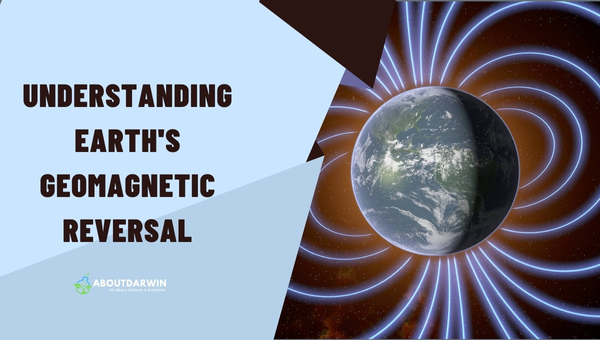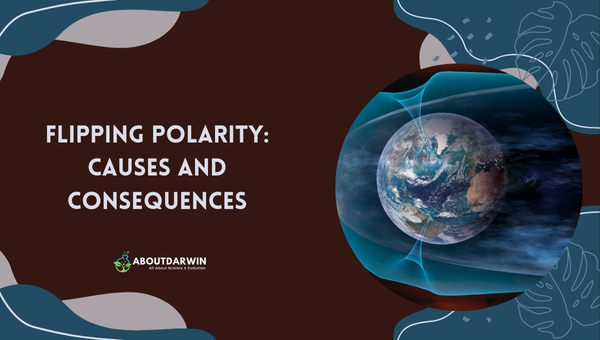Physical Address
304 North Cardinal St.
Dorchester Center, MA 02124
I’ve always been fascinated by Earth’s geomagnetic reversal, the flipping of our planet’s magnetic poles. It’s an intriguing and relatively unknown phenomenon that significantly impacts life on Earth. These reversals have been sporadic throughout history, yet an upcoming shift could affect technology and ecology.
A geomagnetic reversal occurs when Earth’s magnetic poles swap positions, causing the north to become south and vice versa. This change is caused by the turbulent motion of the molten iron in our planet’s outer core, affecting the magnetic field surrounding and protecting Earth. While it may sound alarming, this process has happened numerous times over our planet’s 4.5-billion-year existence.
Though I can’t predict the precise moment the next reversal will occur, it’s crucial to understand its possible consequences on our modern society. From disruption in navigation systems to increased cosmic radiation exposure, the potential effects warrant the attention of scientists and the general public alike.
As we continue investigating this phenomenon, we’ll uncover invaluable knowledge about our world and how we can better prepare for future geomagnetic reversals.
Contents
Earth’s geomagnetic reversal, also known as the flipping of the planet’s polarity, is an intriguing phenomenon that has captured the attention of scientists and researchers for decades. In this section, I’ll provide a high-level explanation of geomagnetic reversal and outline the factors that contribute to its occurrence.

The Earth’s magnetic field is generated by the movement of molten iron within its outer core. This constantly shifting molten iron creates a dynamo effect, resulting in the Earth’s magnetic field. Sometimes, the movement of the molten iron leads to a reversal of the magnetic field, causing the magnetic poles to swap positions.
It’s important to note that geomagnetic reversals are not instantaneous events. They can take thousands of years to complete, with the magnetic field gradually weakening and recovering. Various factors contribute to the occurrence of geomagnetic reversals, such as:
Scientists have discovered evidence of numerous geomagnetic reversals throughout Earth’s history. By analyzing the magnetic signature of rocks and sediments, they can determine the direction of the Earth’s magnetic field at the time of its formation. Studying these patterns helps researchers better understand the frequency and duration of geomagnetic reversals.
One of Earth’s most well-known geomagnetic reversals is the Brunhes-Matuyama reversal, which occurred around 780,000 years ago. This event is marked by the shift from a predominantly reversed magnetic field to the present-day standard field.
Understanding the potential impact of a geomagnetic reversal on our planet is important. Some possible consequences include:
However, these impacts shouldn’t be cause for alarm, as geomagnetic reversals occur over long periods, allowing ample opportunity for technological adaptation and mitigation strategies.
Earth’s geomagnetic reversal is a fascinating phenomenon resulting from the complex interactions within our planet’s core. By studying past reversals and keeping a close eye on the Earth’s magnetic field, scientists can continue to unravel the mysteries surrounding geomagnetic reversal and better prepare for its potential impacts on our world.
When it comes to Earth’s geomagnetic reversal, understanding the causes and possible consequences is crucial. In this section, I’ll delve into the factors that provoke Earth’s magnetic field fluctuations and expand on how these polar changes could affect our world.

The primary cause of these geomagnetic reversals is the movement of the Earth’s outer core. Composed of molten iron and nickel, the Earth’s outer core swirls and creates electrical currents, generating the planet’s magnetic field.
When the flow of molten material changes, it can lead to fluctuations in the magnetic field, sometimes even flipping the poles. While this process isn’t fully understood, it’s believed that the chaotic motion of the outer core contributes significantly to these reversals.
Throughout Earth’s history, there have been several geomagnetic reversals, occurring at irregular intervals. The most recent reversal, known as the Brunhes-Matuyama reversal, took place approximately 780,000 years ago. Flipping polarity usually takes thousands of years to complete, making it a slow process when compared to human timescales.
There’s much debate regarding the consequences of geomagnetic reversal on Earth and its inhabitants. Some potential effects include:
| Effects | Consequences |
|---|---|
| Solar Radiation | Harm to human health and electronics |
| Wildlife | Disorientation and disrupted migration patterns |
| Climate Change | Shifts in temperature and precipitation patterns |
It’s important to note that while these consequences may seem alarming, the long timescale of geomagnetic reversals means that these effects would occur gradually. This affords ample time for adaptation and technological advancements to mitigate potential threats.
Earth’s polarity is flipping primarily caused by molten material’s movement in the planet’s outer core. Though the process isn’t completely understood, its consequences could be wide-ranging, possibly impacting human health, wildlife, and climate patterns. However, considering the time these reversals take to occur, there might be room for adaptation and innovation.
Earth’s geomagnetic reversal has long been a topic of curiosity and fascination for scientists, and I’ve delved into the intricate world of this geological phenomenon in this article. With a deeper understanding of how these polarity flips occur and their impact on the planet, it’s essential to assess their potential implications for life on Earth.
Geomagnetic reversals are a natural process, having occurred numerous times in the past. The most recent reversal, the Brunhes-Matuyama reversal, took place approximately 780,000 years ago. Although these reversals occur infrequently, their impacts can be far-reaching.
Several theories suggest how geomagnetic reversals might affect life on Earth. Some potential consequences include:
While the precise consequences of a geomagnetic reversal remain speculative, it’s crucial to continue exploring this phenomenon and learn from past occurrences. Understanding the processes behind these polarity flips and their potential impact on life can better prepare us for any future events.
Furthermore, studying Earth’s geomagnetic reversal can help us expand our knowledge about other planets and celestial bodies. Scientists must continue investigating these intriguing natural events, not just for curiosity but also for the potential implications on our lives and the world around us. Ultimately, the more we know about our planet, the better equipped we’ll be to safeguard its future.